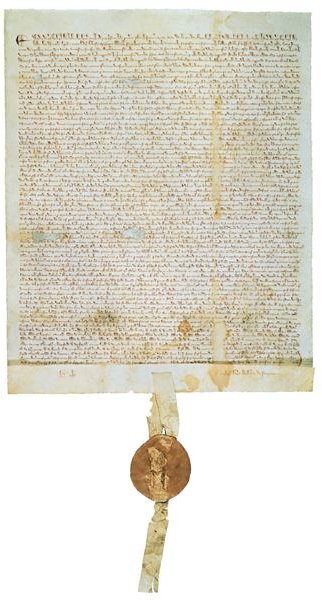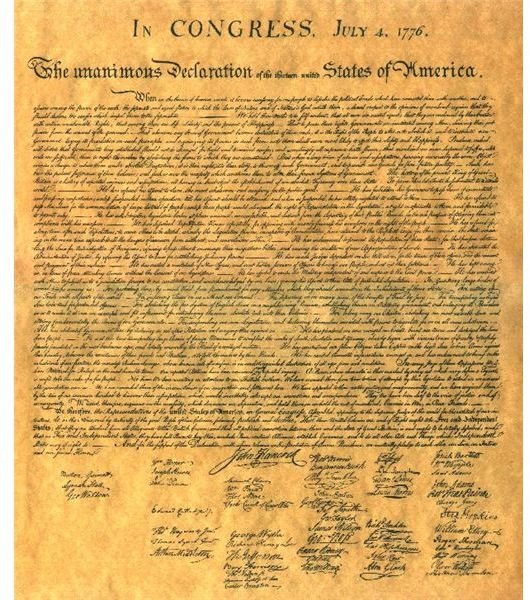Studying the History of the Bill of Rights
Short History of a Vital Document
On September 12, 1787, shortly after the finishing touches had been put on the new United States Constitution, George Mason, a
delegate from Virginia, pointed out a serious omission, the absence of a bill of rights. He felt a bill of rights would appease the people who feared a too-powerful central government, and that one could be drafted in a few hours based on various state constitutions, the most notable being his own Virginia Declaration of Rights. His motion was not seconded and the Constitution went forth without a bill of rights. It didn’t take long for delegates to realize they had made a political blunder by not including a Bill of Rights.
The Constitution was signed by delegates from 12 of the 13 colonies, Rhode Island refused to sign it without a Bill of Rights. When the Constitution went to individual states for ratification, most ratified it on certain conditions. These conditions were finally embodied in the Bill of Rights, written after the Constitution had been ratified. James Madison introduced the proposed Bill of Rights in the House of Representatives on June 8, 1789. Congress approved 12 amendments for ratification on September 25, 1789 and sent them to the states for ratification. Virginia ratified the Bill of Rights on December 15, 1791, and 10 of the 12 proposed amendments officially became a part of the U.S. Constitution.
Historical Influences
The history of the Bill of Rights goes back hundreds of years. Following are a list of important documents, ideas, and philosophies that influenced the founding fathers to include a Bill of Rights to the United States Constitution.

Magna Carta (1215) - In 1215 English barons confronted a despotic King John and demanded a restoration of traditional rights. These traditional rights were written down and confirmed with the royal seal. Although the barons’ motives were self-serving and they intended only to benefit themselves, the rights stated in the Magna Carta eventually spread to all English freemen.
The English Bill of Rights (1689) - In 1688, during the Glorious Revolution, King James II abdicated his throne and fled England. He was succeeded by his daughter, Mary, and her husband, William of Orange. Before being allowed to ascend to the throne, British parliament forced them to accept a Declaration of Rights. These basic rights include provisions prohibiting the levying of taxes or passing laws without parliament’s consent. It also promised fundamental liberties–freedom of speech, elections, and the prohibition of excessive bail and punishments for the accused.

John Locke’s Second Treatise on Civil Government (1689) - Locke wrote his Second Treatise on Civil Government in defense of the Glorious Revolution. In his treatise, Locke states that individuals have a right to “life, liberty, and property” and that when a government fails to protect these rights, or worse, infringes upon these rights, then the people have the right to overthrow that government.
Virginia Declaration of Rights (1776) - George Mason created the Virginia Declaration of Rights in May of 1776, influencing the writing of other state constitutions, the Declaration of Independence, and the Bill of Rights to the United States Constitution. He borrowed concepts from Locke regarding life, liberty, and property. During the Revolutionary War and the ensuing years, it was Mason’s declaration that rallied colonists, not the Declaration of Independence, which was celebrated more as a document declaring independence than one that set forth ideals.

The Declaration of Independence (1776) - It can be argued that the Bill of Rights Constitutionalized the philosophical ideals presented in the Declaration of Independence: the importance of God, repeated numerous times in the Declaration, finds its way into the first amendment of the Constitution; the right to liberty exists in all 10 amendments in the Bill of Rights, including amendments 4-8, which deal with the rights of the accused; the concept of limited government, present it all 10 amendments, is explicitly stated in amendments 9 and 10. A glaring omission from the Declaration, property rights, also finds its way into amendments 2-7.
The Future of the Bill of Rights
Now that you have the basic history of the Bill of Rights, it’s time to look toward the future.
The founding fathers wrote the Constitution to govern human nature. They understood the natural inclination of rulers to want more power. As the federal government grows larger by the day, it’s imperative that citizens of the United States demand their elected officials return to the Constitution for guidance and hold them accountable to it.
This post is part of the series: Bill of Rights Study Guide
The Bill of Rights guarantees Americans’ most precious freedoms. Make sure you understand them before they disappear.
